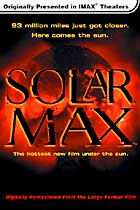
SOLAR MAX
Project gives us a good look at the sun -- and a warning
Friday, December 22, 2000
By JEREMIAH STODDARD
SPECIAL TO THE POST-INTELLIGENCER
The old warning not to look directly at the sun is being ignored by scientists
from NASA and the European Space Agency.
Dr. Paal Brekke, who works for ESA and NASA, spoke at the Pacific Science
Center yesterday about the Solar and Heliospheric Observatory (SOHO) project
and offered a warning about an upcoming solar storm that could cause trouble
here on Earth.
Launched on Dec. 2, 1995, SOHO has provided invaluable information about
the sun -- from the orb's interior composition to its violent, dynamic
atmosphere to the sun's effect on our climate.
Using computer data generated by the 9.5-meter-wide satellite positioned
directly between the Earth and the sun, Brekke, a Norwegian, and his team
of international solar physicists are kept busy analyzing data.
Brekke said SOHO's mission is becoming increasingly complex.
"We need overlapping instrumentation to better collect the data,"
Brekke said in an interview. "But as we get better pictures of the
sun, our models become more complex," he said. "Still, it's
a nice problem to have."
The SOHO project is fully funded through 2003. It costs $24 million a
year to operate and has enough fuel to continue until 2045.
Balanced between the gravitational pull of Earth and the sun, SOHO beams
real-time images to the Goddard Space Flight Center in Maryland.
Among the most striking views is of the sun's corona. SOHO blocks the
light coming directly from the sun with an occulter disk, creating an
artificial eclipse within the instrument itself.
This allows the satellite, with its 45 million kilometer range of view,
to detect the sun's flares, called coronal streamers. Because of the vast
area of space the satellite covers, it has detected over 200 comets since
1995.
Another of SOHO's instruments, the EIT, Extreme ultraviolet Imaging Telescope,
portrays the solar atmosphere at several wavelengths to show solar material
at different temperatures. The 3-D view from the EIT camera is extraordinary,
and inspires awe and fear simultaneously.
Brekke's visit is timed, coincidently, with an upcoming violent solar
storm.
Every 11 years, the sun reverses its polarity. This transition, called
solarmax, will be viewed for the first time by scientists using the SOHO
satellite. Brekke said the intensity of the solarmax events has been growing
each 11 year-cycle for about 400 years.
The last solarmax occurred in 1989. It knocked out all of Eastern Canada's
communications. Six million people in Quebec lost power for nine hours.
In 1978, spy satellites were destroyed.
The current solarmax, which will reach its peak intensity in the next
few months, will last into 2001.
During a solarmax, the Earth's protective magnetosphere is pounded with
highly energetic solar particles, causing the Earth's magnetic field to
wildly change in direction and intensity.
"It effects everything. Satellites, pipelines, power grids, navigation
systems, cell phones, radio stations, pagers, Internet companies, oil
and gas exploration," Brekke said.
"Even pigeons, because they rely on magnetic fields for their navigation."
The solarmax isn't all doom and gloom, however. Brekke informed those
in attendance that because of the solarmax, a low level C7-class solar
flare burst from the sun Monday and will treat the Seattle area to an
aurora either last night or tonight.
An aurora is a dynamic visual manifestation of solar-induced geomagnetic
storms. The solar wind energizes electrons and ions in the magnetosphere.
When the particles strike the Earth's atmosphere, they glow in different
colors.
With nearly 2,000 satellites in orbit around the Earth, the solarmax event,
said Brekke, may very well dramatically effect our lives.
The sun's power will soon be on full display in Seattle. SolarMax, an
IMAX film, will be shown at the Pacific Science Center starting in January.
source: seattlepi.nwsource.com